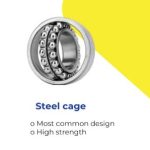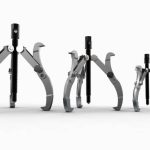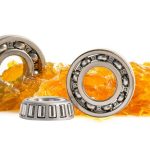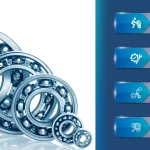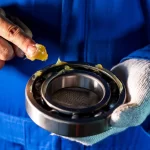Bearings are what keeps machines synced and running for optimum performance. Which is why for uninterrupted operability, good bearings are a must for pumps and compressors across industries.
By supporting rotational movement, bearings reduce friction and wear, ensuring a hassle free and smooth operation. Optimising bearing design for these machines is essential to enhance efficiency and longevity while minimising maintenance costs.
In pumps and compressors, bearings bear the responsibility of minimising friction, supporting loads, and enabling smooth rotational motion. Hence their reliability heavily depends on the quality and design to avoid premature failure, downtime, and high maintenance costs.
Effective bearing design ensures optimum performance by balancing load capacity, speed, and temperature control, which are critical factors in industrial applications like pumping fluids and compressing gases.
Key Design Factors in Bearings for Pumps and Compressors
- Load Capacity: In pumps and compressors, bearings must handle both radial and axial loads. For instance, roller bearings have a better ability to handle high radial loads, whereas thrust bearings on the other hand are used in pumps that experience significant axial forces.
- Speed: The rotational speed of pumps and compressors are vital inputs to enhance the performance of the bearings. For high-speed applications, bearings must be capable of operating at faster speeds without overheating or causing excess wear. For example: Ball bearings have lower rolling resistance ideal for high-speed environments. On the other hand roller bearings perform better under moderate speeds and higher loads as explained earlier.
- Temperature: Given that speed and rotations are vital for bearing performance, temperature fluctuations need to be well managed for diminishing downtime. This is especially true in case of compressors that generate significant heat during gas compression. Right material and lubrication system ensures durability of bearings under thermal stresses.
- Lubrication: Lubrication is key to reducing friction. Pumps and compressors usually involve different loads and temperatures. Hence tailored lubrication solutions are necessary to eliminate overheating, wear, and ultimately bearing failure. Proper design considerations must factor in proper intervals for lubrication maintenance as well.
Types of Bearings Used in Pumps and Compressors
| Bearing Type | Features | Applications |
| Ball Bearings |
|
Centrifugal pumps Reciprocating compressors |
| Roller Bearings |
|
Gear pumps Positive displacement pumps |
| Thrust Bearings |
|
Vertical centrifugal pumps High-pressure compressors |
Material Selection for Bearings
It is evident that load and thermal pressure are major factors that determine the life of bearings used in pumps and compressors. These directly impact the material used in such bearings which will not only counter the heat, load and speed but also determine its durability, load-carrying capacity, and resistance to wear. Common materials used in bearing manufacturing include:
- Steel: High-carbon and stainless steel are strong and wear resistant. Stainless steel especially works well in environments prone to corrosion.
- Ceramics: Ceramic bearings offer higher resistance to heat and corrosion. It makes perfect sense to use them in high-speed and high-temperature applications.
- Plastics: These are effective in cases where reduced weight and chemical resistance is required.
Bearing Housing and Mounting Considerations
The bearing itself does not ensure a great performance unless it is installed correctly. Proper mounting and housing are essential to counter the ill effects of misalignment. Improper mounting can lead to premature wear. Bearing housings therefore must provide a stable support. This can be done when the housing is sealed properly to prevent contamination by dust, dirt, or moisture.
When selecting a housing, factors such as bearing type, lubrication method, and environmental exposure must be considered first. Sealed or shielded housings used in harsh environments help protect the bearings from contaminants that may lead to untimely wear.
Lubrication Systems and Maintenance
Lubrication is critical for bearing longevity in pumps and compressors. This is because of the speed and heat elements as highlighted earlier. Therefore depending on the application, lubrication can be achieved through grease or oil. In high-speed compressors, oil lubrication systems with filters and coolers are often used to manage the heat generated.
Regular maintenance routines, such as checking lubricant levels, inspecting seals, and cleaning components, are essential to ensuring that the bearings operate smoothly and efficiently.
FAQ's
What type of bearing is used in pumps?
Ball bearings and roller bearings are commonly used in pumps, depending on the load and speed requirements.
What bearings are used in compressors?
Compressors typically use roller bearings and thrust bearings to handle radial and axial loads under high pressure.
What are the types of bearings?
The main types of bearings include ball bearings, roller bearings, thrust bearings, and plain bearings.
What bearings are used in a gear pump?
Gear pumps typically use cylindrical or tapered roller bearings due to the high radial loads involved.
Which bearing is best for a centrifugal pump?
Ball bearings are commonly used in centrifugal pumps due to their ability to handle both radial and axial loads while offering smooth, high-speed operation.




